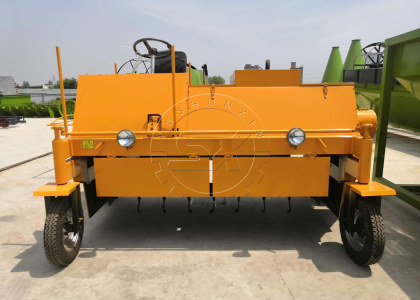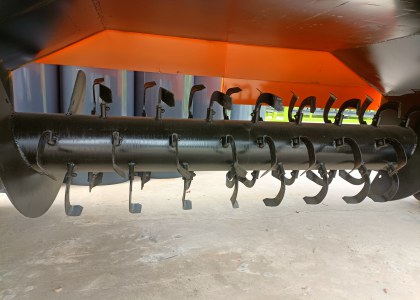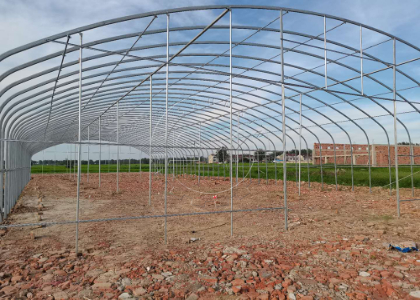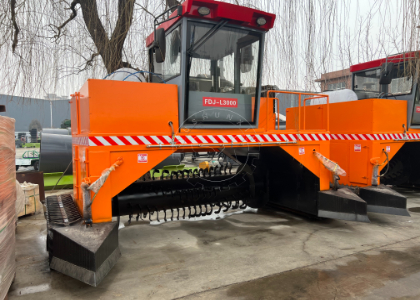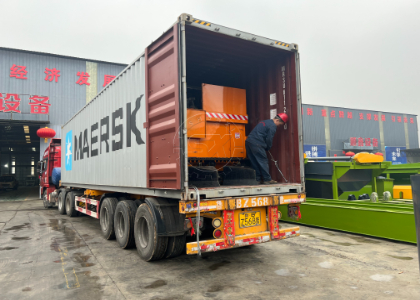Self-Propelled Compost Turner
What is the Function of Self-Propelled Compost Turner?

By far, windrow composting is the most common method for composting. Successful compost has a significant influence on making organic fertilizer. A self-propelled compost turner is often used to turn the compost. It moves through the windrow and enables oxygen to get in by the paddle.
At the same time, waste gases in the compost are vented. A self-propelled compost turner can help turn the windrow in an efficient and convenient way. Also, it is suitable for composting on smooth ground. Therefore, it is mainly used in factories which owns a vast area of space.
In agriculture, organic manure is shaped like a long pile like a windrow to be turned regularly to ensure oxygen content and porosity. It is a simple way of making compost. You can use this method to produce large volumes of compost. For this reason, it is widely used in organic manure composting of all scales.
Bio Fertilizer Equipment
MFP factory owns a manufacturing factory, so we can offer you high-quality and energy-saving products. What’s more, our machines are moderately priced. It is worth mentioning that we can assemble not only an organic fertilizer production line but also a cow dung fertilizer production line and a compound fertilizer production line. The right video is our customer’s crawler type compost machine arrival. He ordered this compost machine to ferment his chicken farm wastes.
When to Stop Turning Commercial Compost Windrow?
You can determine when to stop turning by a judge from its temperature. In general, when temperatures exceed about 65°C, or when they fall below 45°C, you need to turn the windrow.
You should turn the windrow compost when the temperature decreases and repeat about 4-5 times until the temperature ceases to rise. If the compost reaches the curing stage, you can stop turning commercial compost. It means the compost has decomposed thoroughly and is ready for plants.
What is the speed of the self-propelled compost turner?
How much does a self-propelled compost turner cost?
MFP company manufactures self-propelled compost turners in our own factory, therefore, we provide you with factory-gate prices. Moreover, we can guarantee the quality of our products and they have a 365-day warranty.
The cost of self-propelled compost turner varies with its different types and models. A moving type compost turner is $5,000-$6,000, while a crawler type compost turner costs you around $12,000-$65,000. You can regard the crawler type as an updated version of the moving type compost turner. The former has a higher capacity and a better working environment for the driver.
moving type compost turner
- 400-500tph Capacity
self-propelled compost turner
- 500-700tph Capacity
How often do you turn the compost in the windrow?
We can divide the fermentation process into two stages, that is, the active phase and the aging phase. The first stage begins after the windrow compost is ready and it requires a heat requirement. You can accomplish this by turning the compost) of 55 degree Celsius(minimum) for at least 3 days. Using self-propelled compost turners can decrease the time of the active phase, which can finish in 10 days.
Then, the next stage is the aging phase, after active composting. It takes about 3 days.
What is the Benefit of Windrow Composting?
Economic benefits of windrow composting include improved soil quality and increased biological activity. Composting minimizes emissions of harmful gases from organic waste. More importantly, the use of compost can reduce the dependency on chemical fertilizers. In another way, windrow composting saves your cost of constructing grooves, while you also need an adequate area to operate.


